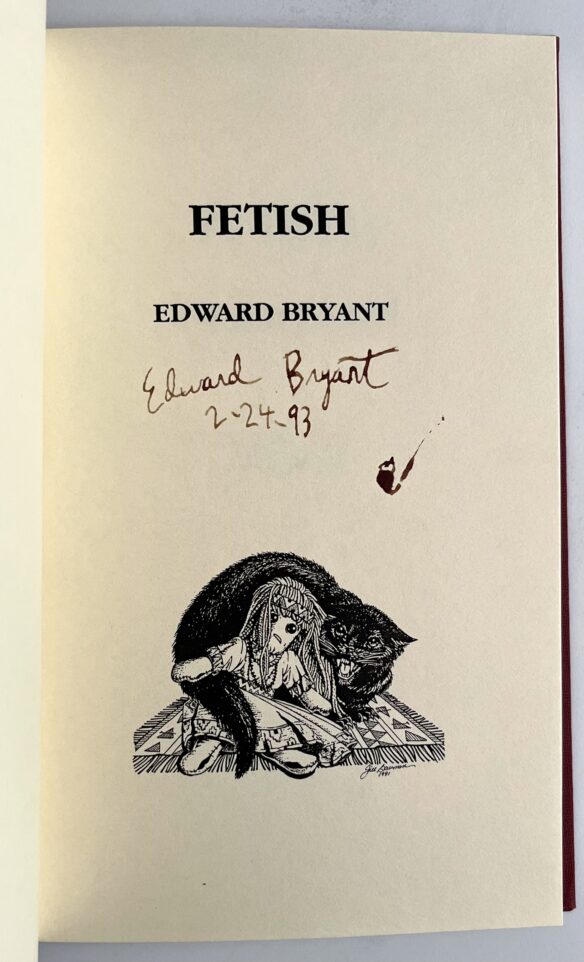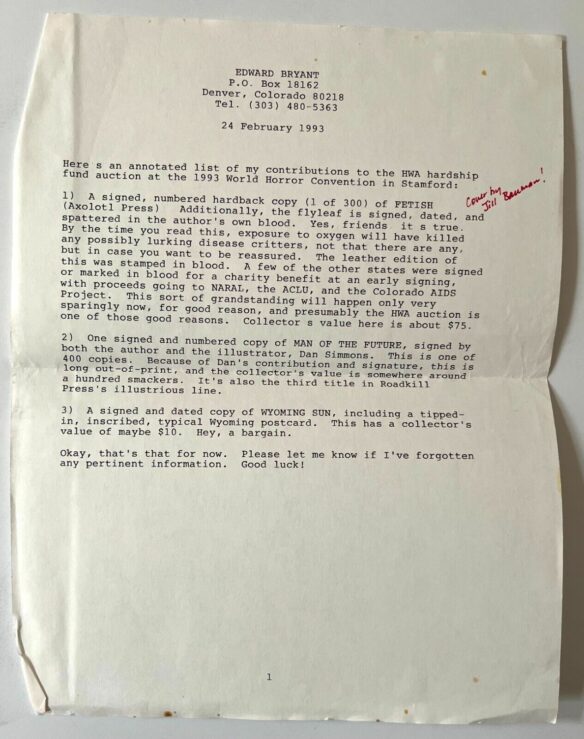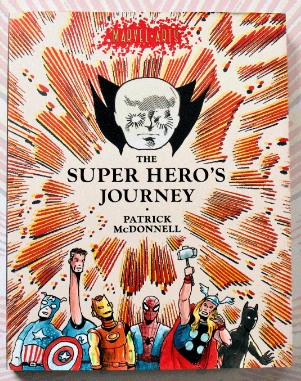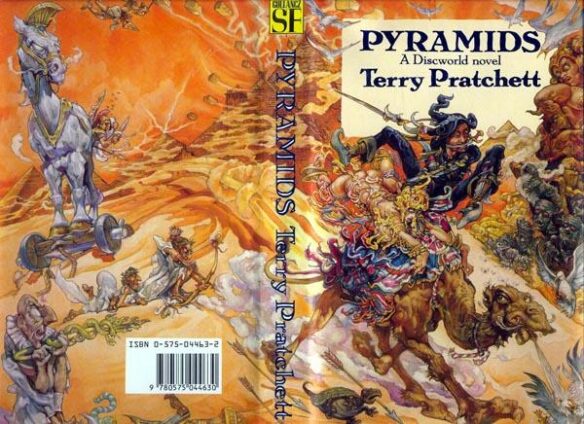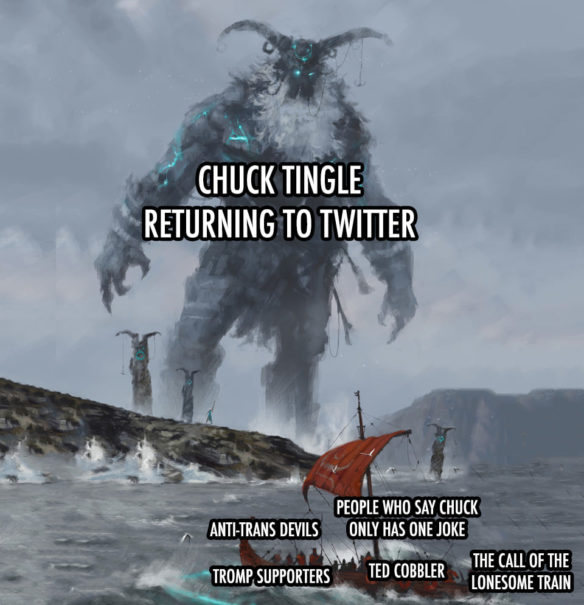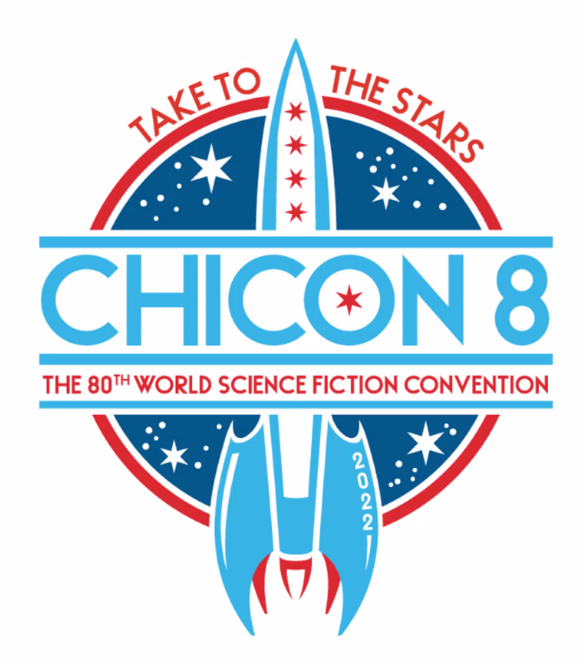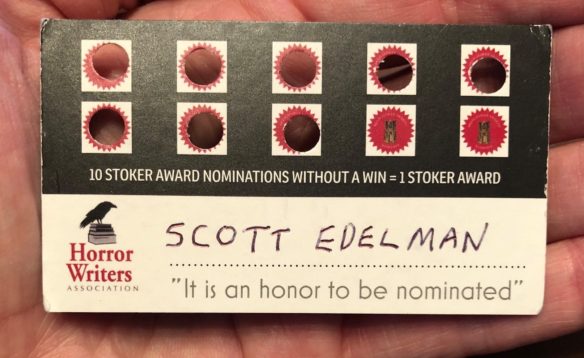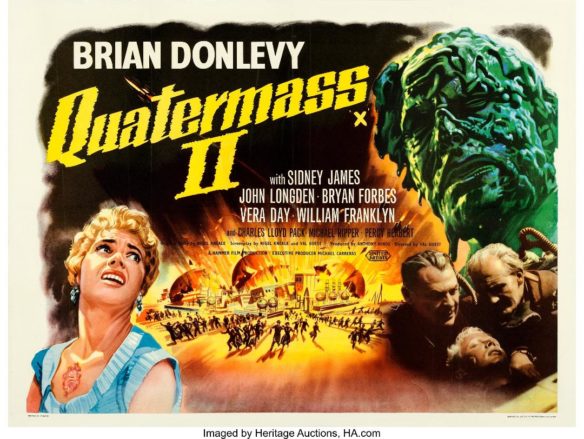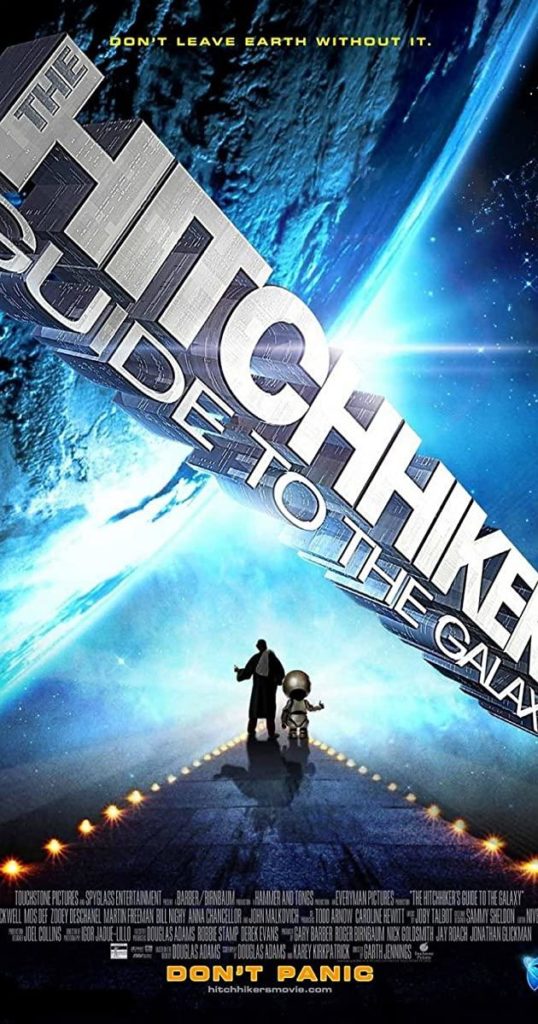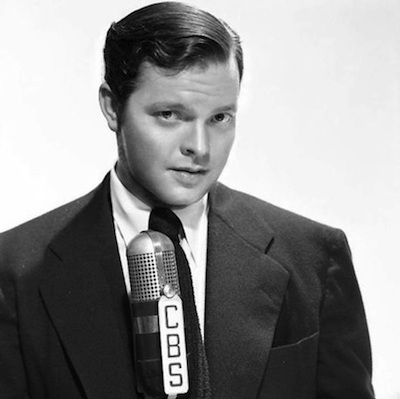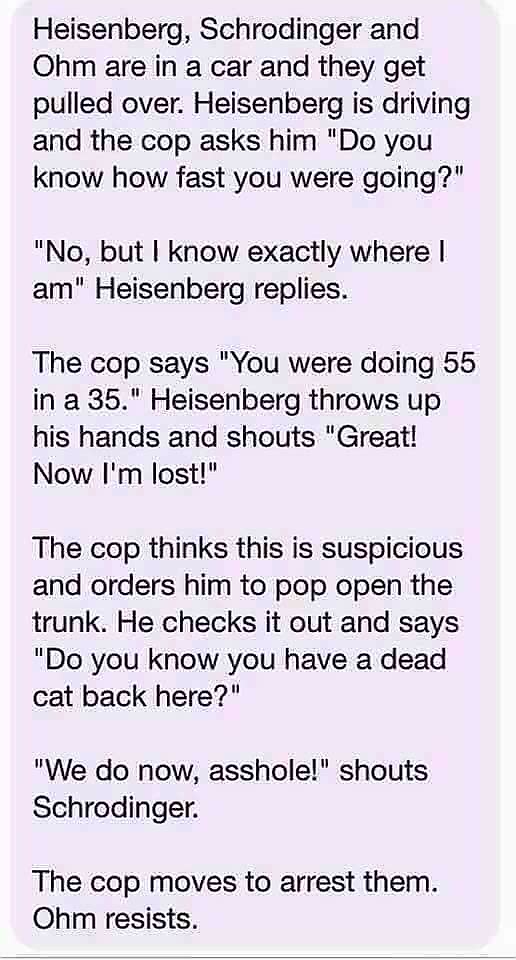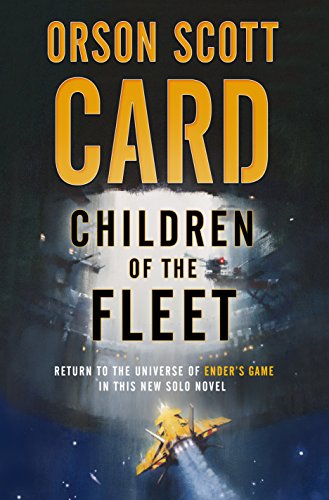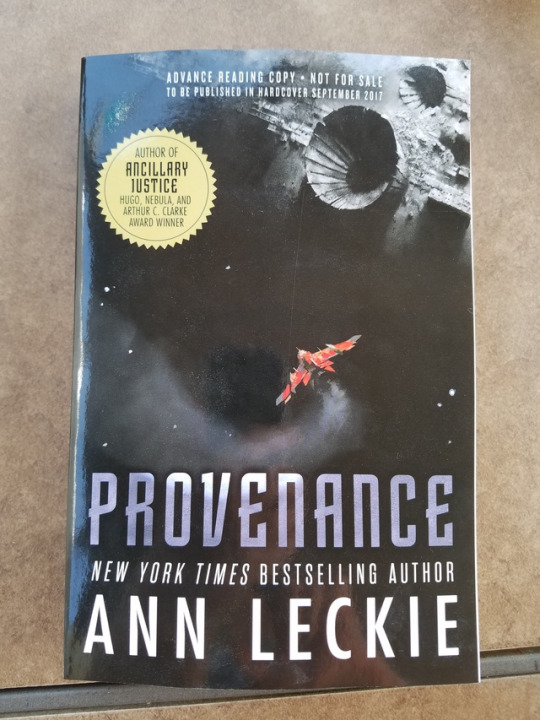(1) JOHN WISWELL COVER LAUNCH. DAW Books has shared the cover of Wearing the Lion, the second novel from Nebula Award-winning John Wiswell, which will forever change how you understand the man behind the myth of Heracles—and Hera, the goddess reluctantly bound to him.

The cover, illustrated by Tyler Miles Lockett and art directed by Debbie Holmes, depicts one of the most famous myths surrounding the Greek warrior, the slaying of the Nemean lion, except that in this version of events, Wiswell’s Heracles chooses to reject expectations and care for the lion instead.
Wiswell is the author of the 2024 success Someone You Can Build a Nest In — “a heartwarming (and sometimes heartrending) fantasy romance between a monster and the monster hunter who loves her.”
Wearing the Lion is scheduled for release in hardcover on June 17, 2025 in the US and June 19, 2025, in the UK. It is available now for pre-order.
(2) SIGN OF A TREND? Add Muse from the Orb to the list of those who are happy Orbital won the Booker Award: “I Told You People About ORBITAL”.
…Exulting over industry awards is a rare thing for me. Familiarity with the business side of publishing imbues you with a deep, abiding cynicism when you learn just how many awards are corporate exercises, popularity contests, reflections of limited demographics with bespoke priorities to signal, or literally just purchased by the house.
Nevertheless, I’m delighted that Orbital by Samantha Harvey won the 2024 Man Booker Prize. It’s well deserved. I was impressed by this book — sometimes you dip into a novel and think, So — they DO still write ‘em like that anymore.
Orbital’s win is also a sign of continued success for the nonofficial genre of prestige-literary-speculative-fiction, whose prevalence in mainstream shortlists and awards like the Booker is no longer a fluke but a pattern. (See also: The Seven Moons of Maali Almeida [2022] and Prophet Song [2023]).…
Too late for Orbital to do it, but could a future book sweep the Hugo and the Booker Prize?
… Honestly, the biggest obstacle to a Hugo-Booker singularity would be the fans and demographics. The Hugo and Booker cater to very different groups of readers, with the Hugo and Worldcon crowd skewing very nerd/fandom and High Genre. (This year Dungeons and Dragons won Best Movie over Poor Things.) But at the same time, it seems that the SFF short fiction market is feeling increasingly literary and MFA-inflected, while literary fiction imprints seem to be giving a lot of deals to MFA grads who’ll write “fresh” literary takes on genre stuff like vampires. The amount of literary fiction editors/agents I’ve met who proudly announce they’re into “literary fiction with speculative elements” grows by the month. Are the conditions there? Is John the Baptist preparing the way in the wilderness?…
(3) SECOND-STAGE TAKEOFF. And the award gave Harvey’s book a sales boost: “Samantha Harvey’s Booker-winning Orbital tops UK bestseller list” reports the Guardian.
Samantha Harvey’s Booker-winning Orbital has rocketed to the top of the UK bestseller chart, becoming the first Booker novel to hit number one in the week of its win.
20,040 copies were sold in the UK last week across paperback and hardback editions, according to Nielsen BookData…
(4) UK EASTERCON 2027 BID. Since we last reported about the Glasgow bid for the 2027 Eastercon they’ve published the names of the bid committee. They’re still deciding on a venue.
- Alan Fleming and David Bamford — co-chairs
- Steve Cooper — treasurer
- Kate Wood — secretary & timeline
- Ila Khan — communications
- Kirsty Wood — liaison
And we’re being assisted by Mark Meenan and Meg MacDonald in liaising with the Glasgow Convention Bureau in the search for a location.
(5) ADDING A WING TO THE HALL OF FAME. Strange at Ecbatan’s Rich Horton has some fun imagining what belongs in a hypothetical next volume of the SF Hall of Fame. As someone who has read widely, he has lots of good suggestions: “SF Hall of Fame 1989-2018” at Strange at Ecbatan.
…I have lists of “short stories” (up to approximately 10,000 words) for a rough analog to the SF HOF Volume I, and novellas (10,000 to 40,000 or so) as a rough analog to Volumes IIA and IIB. I purposely slanted the list heavily to SF and not fantasy — much as the first books were — but there is some fantasy on these lists. I stuck to the 1989-2018 timeframe. I chose 30 short stories and 22 novellas — just a bit more than the original books had. (So sue me!)…
(6) THE NEXT WAR AFTER THE WAR TO END ALL WARS. Jeremy Zenter reminds readers about “The Many Alt-Histories of World War II” at the SFWA Blog.
…Some writers have drawn from [Philip K.] Dick’s example to blend other science-fiction aesthetics with alt-history. Like Dick’s novel [The Man in the High Castle], Peter Tieyaras’s The United States of Japan involves a contraband story that imagines a world without fascism, in a US divided between Germany and Japan; only, instead of a book, a video game is the forbidden medium. The narrative priorities are different, though. This novel depicts a 1980s Japanese pop culture that rebels against the status quo, so we get more of a pulpy escapade that follows investigative tropes and uses oodles of cyberpunk technology. Tieyaras was clearly inspired by Dick, but his writing is also reminiscent of William Gibson’s Neuromancer (1984). The result is a work that honors its predecessors by creating a new world in the long shadow of genre classics….
(7) BRING ME THE HEAD OF ALBERT EINSTEIN. Andrew Porter feels yesterday’s Scroll unfairly highlighted only one lot in Christie’s “Science Fiction and Fantasy” auction, running from November 28-December 12. So he sent me this search link. It returns 49 items and not only art. There’s also two rocks from Mars (they came to the Earth on the rebound). And the head of a robot so famous Christie’s thinks it will sell for at least £100,000.
Einstein by Hanson
Robotic head, with 28 servo motors for face movements and 3 servo motors for neck movements, linked at various points with Teflon-coated nylon strings, with Hanson ‘Flubber’ covering
16in. (40.5cm.) high
created in 2005
The Einstein by Hanson robotic head, developed by Hanson Robotics in 2005: a landmark achievement in robotics and artificial intelligence.
This innovative creation blends advanced mechanics with a distinctly human-like visage modelled after the renowned physicist Albert Einstein. His likeness was constructed using Frubber, a flexible, skin-like material developed by Hanson Robotics, while various motors inside the head made it capable of performing a range of facial expressions. Indeed, with over thirty-five actuators in the head alone, the robot could mimic human facial movements with remarkable accuracy, including nuanced expressions around the eyes and mouth. The human-like facial expressiveness made Einstein by Hanson one of the first robots to evoke empathy and a sense of personality, going beyond mere mechanical functionality. This was both a hand-sculpted work of art and a work of cutting edge technological innovation, resulting in numerous patents, awards, and scientific papers on the subject of AI mechanisms for synthetic facial expressions and human-robot interactions…..

(8) CLAP A STOPPER OVER IT. “Ready to sing along at ‘Wicked’? It’s not happening in AMC movie theaters” says Yahoo! AMC isn’t telling customers,“Shut yer festering gob!” They’re saying this:
…Singing is on the list of no-nos for guests in the theater, according to an advisory being shown ahead of Friday’s release of Part 1 of the expected blockbuster.
“At AMC Theatres, silence is golden,” says the 30-second advisory, which features scenes from the movie. “No talking. No texting. No singing. No wailing. No flirting. And absolutely no name-calling. Enjoy the magic of movies.”
(9) IT’S A THEORY. [Item by Steven French.] How L. Frank Baum was influenced by his feminist (and Theosophical) mother-in-law: “The Feminist Who Inspired the Witches of Oz” in Smithsonian Magazine.
The backstories of the Wicked Witch of the West and Glinda the Good are the subject of the upcoming movie Wicked, based on Gregory Maguire’s 1995 novel and Winnie Holzman and Stephen Schwartz’s 2003 stage musical. The witch, who is unnamed in The Wizard of Oz, has a name in Wicked: Elphaba, an homage to the initials of L. Frank Baum. (His first name, which he rarely used, was Lyman.) But the real-life backstory of the witches of Oz is just as fascinating. It involves a hidden hero of the 19th-century women’s rights movement and the most powerful woman in Baum’s life: his mother-in-law, Matilda Electa Joslyn Gage.
It was likely at Gage’s urging that Baum began submitting his poems and stories to magazines. Gage even suggested putting a cyclone in a children’s story. But she was a notable figure in her own right. As one of the three principal leaders of the women’s rights movement, along with Susan B. Anthony and Elizabeth Cady Stanton, Gage was known for her radical views and confrontational approach. At the Statue of Liberty’s unveiling in 1886, she showed up on a cattle barge with a megaphone, shouting that it was “a gigantic lie, a travesty and a mockery” to portray liberty as a woman when actual American women had so few rights.
(10) MEMORY LANE.
[Written by Paul Weimer.]
Anniversary: Back to the Future II (1989)
By Paul Weimer: Back to the Future, the original, was a revelation for me. Even if I am not musically inclined (for a movie that is often all about the music), the movie worked for me on a lot of levels. I was in an age and a place and a time where I could see movies in a theater, and then read about them in magazines like Starlog, anticipating and wondering what was going to happen…and then discuss them afterwards. I was still young and shy and didn’t send any letters to such magazines, but I read them all avidly.
And then came the movie itself. I’d read a bunch of time travel SF by now, and so I was delighted to see Back to the Future II use time travel in a way the first had not. The first movie used it as a device to move Marty to the past and comment on culture in the 1950’s and the present of the 1980s. Back to the Future II actually used time travel in a way that few genre movies would contemplate. Most genre movies tend toward scenarios where the time travel proves to have happened all along. History is never changed and can’t be changed.
Back to the Future II changed all that, when 2015 Biff gives 1955 Biff the Almanac, and utterly changes his future. The vision of the Biff Tannen Wins timeline is dark, horrendous and compelling. It makes Potterville from It’s a Wonderful Life look like a theme park in comparison. Back to the Future II is a “set things right where things went wrong”, but it was actual malice aforethought, not chance or circumstance, that Marty has to fix. This leads to a delightful overlapping of events in 1955 as Marty has to desperately fix the timeline…but not screw up his own future in the process. It’s a wonderfully done sequence of events, and we get a couple of extra scenes that are implied in the first movie, but never seen. It’s an attention to detail in a time travel change history movie that few have attempted, much less this well.
It occurs to me, though, that we’ve wound up in the Biff Tannen Wins timeline after all. Sobering, but undeniable in the end. And no time machine to save us.
It also occurs to me that this movie suffers from a lack of strong female characters. After Jennifer being brought along at the end of Back to the Future II, she gets knocked out first thing by Doc in Back to the Future II, in a whiplash that really doesn’t work well. The movie is even more of a young man’s adventure than the first, but with more action adventure and less sexual innuendo than the first.
But back to the plot. After seeing the movie came the aftershocks of the movie. After all, Back to the Future II lives on a cliffhanger. Doc is trapped in the past, and is doomed to die. Marty needs the help of the 1955 Doc Brown…but not to go home, but to go to the past to save him. It’s a lovely tangle of time paradoxes and foreshadowing and destiny that the second movie revelled in, and so the magazine’s endless discussions and theories on how time travel really worked, or should, gave Back to the Future II an afterlife for me after seeing it for the first time. Of course we take such things for granted, now, but Back to the Future II was one of my first real engagements with a movie’s afterlife. (I have a story about Star Trek II in the same vein, but we’ll save that for another day).

(11) EDITOR’S ENDNOTE. Incidentally, Back to the Future The Musical is doing a North American tour. It’s in LA for the rest of the month before moving on.
(12) COMICS SECTION.
- Dinosaur Comics won’t give you indigestion, just regular digestion.
- Eek!, meanwhile, finds a way for kaiju to keep their figures.
- Off the Mark decides it is better to curse the darkness.
- The Argyle Sweater did not see this coming.
- Brewster Rockit shows how AI perversely makes all users happy.
(13) DENIS VILLENEUVE Q&A. “Director Denis Villeneuve On Shooting ‘Dune: Part Two’ In The Desert” at Deadline. “More faithful to Frank Herbert than to the book.”
DEADLINE: It’s also Zendaya’s film. Her Chani provides the moral compass and makes the romance feel real.
VILLENEUVE: Paul is the main character, but Chani is our moral compass. It’s a big difference. That’s where the movie differentiates itself from the book. In the book, she’s a believer, she’s in Paul’s shadow, but I decided to transform our character in order to bring this idea that the movie will be a cautionary tale and not a celebration of his ascension. When the first book was released, Frank Herbert said he was disappointed by the way the book was perceived by some readers who saw in Paul a hero, and saw the book as a celebration of Paul. Herbert wanted to do the opposite. He wanted to do a cautionary tale, a warning against the embrace of charismatic figures. In order to correct this perception, he wrote a second book called Dune Messiah, that made sure that his initial intentions will be more clear. And me knowing this, I made this adaptation having this knowledge. I tried my best to be, let’s say, more faithful to Frank Herbert than to the book…
(14) JUMP ONTO GALACTIC JOURNEY. Do you have any idea what riches are in store for fans at Galactic Journey? Thread starts here. Here are the first two posts.
(15) THEY’RE BAD GUYS FOR CHARITY. amNY encourages us to “Meet the Star Wars villains making a positive impact in New York City”.
In George Lucas’s Star Wars universe, the evil Galactic Empire’s iconic Stormtrooper army isn’t exactly known for doing good deeds. But, in a galaxy not so far, far away – New York City, Long Island and the Hudson Valley, to be exact – the white-armored Troopers are a much more welcome sight.
The Empire City Garrison, founded in 1999, is one of more than 80 chapters of the 501st Legion organizations worldwide. The fan-founded groups began as a means for costumes to showcase their hyperrealistic Stormtrooper replica armor, but soon expanded to include promoting broader interest in Star Wars and volunteerism.
“We’ve raised money on behalf of the Cancer Society, the Autism Society and organizations in the Hudson Valley area. We try to rotate it around,” Chris Feehan, Empire City Garrison commanding officer, said. “If it’s a very small event, we might only have one [trooper]. It only takes one to make a difference and impact whatever that organization is.”
“They’re not selling anything; they include their own costs to be here and take time off of their lives to dress up and do the things,” said Benjamin Kline, Tenacious Toy CEO, who collaborated with the Empire Garrison at New York Comic-Con by giving a customized set of Star Wars stickers. “They’re entertaining while raising money. I think that’s a really good way to be.”
Among the 130 events they participate in a year, New York Comic-Con at Javits Center is one of the most significant. This year, they raised $9,000 in donations, primarily driven by photo opportunities….
(16) TRASH OBLITERATION. “Why can’t we just launch all of Earth’s garbage into the sun?” asks Popular Science. (Didn’t Harry Harrison’s Bill, the Galactic Hero show why this kind of thing is a bad idea in the long run?)
After seeing Elon Musk send thousands upon thousands of satellites into low-Earth orbit, it’s only natural to wonder, why can’t we launch all our junk into space, too? Or even straight into the sun? (You asked. We answered.)
Aside from the moral quandaries raised by such poor stewardship of our already disheveled solar system, Earthlings probably haven’t made a habit of beaming literal garbage into space yet because we simply can’t afford to.
“It’s not cost-feasible at all. You require a lot of thrust and a lot of fuel to do that,” explained John L. Crassidis—a professor of mechanical and aerospace engineering at the State University of New York at Buffalo—in a call with Popular Science. Part of the challenge is that our junk can’t go just anywhere, although it certainly does so here on Earth; microplastics are literally everywhere and the Great Pacific Garbage Patch is around twice the size of Texas….
(17) PITCHING MORE RINGS. Ryan George takes us inside the “The Rings of Power (Season 2) Pitch Meeting”.
(18) THE RAT RACE. Steve Cutts’ 2017 cartoon “Happiness” is “The story of a rodent’s unrelenting quest for happiness and fulfillment.”
[Thanks to Teddy Harvia, Mike Kennedy, Andrew Porter, Jeffrey Smith, John King Tarpinian, Chris Barkley, Cat Eldridge, SF Concatenation’s Jonathan Cowie, Steven French, and Kathy Sullivan for some of these stories. Title credit belongs to File 770 contributing editor of the day Patrick Morris Miller.]



